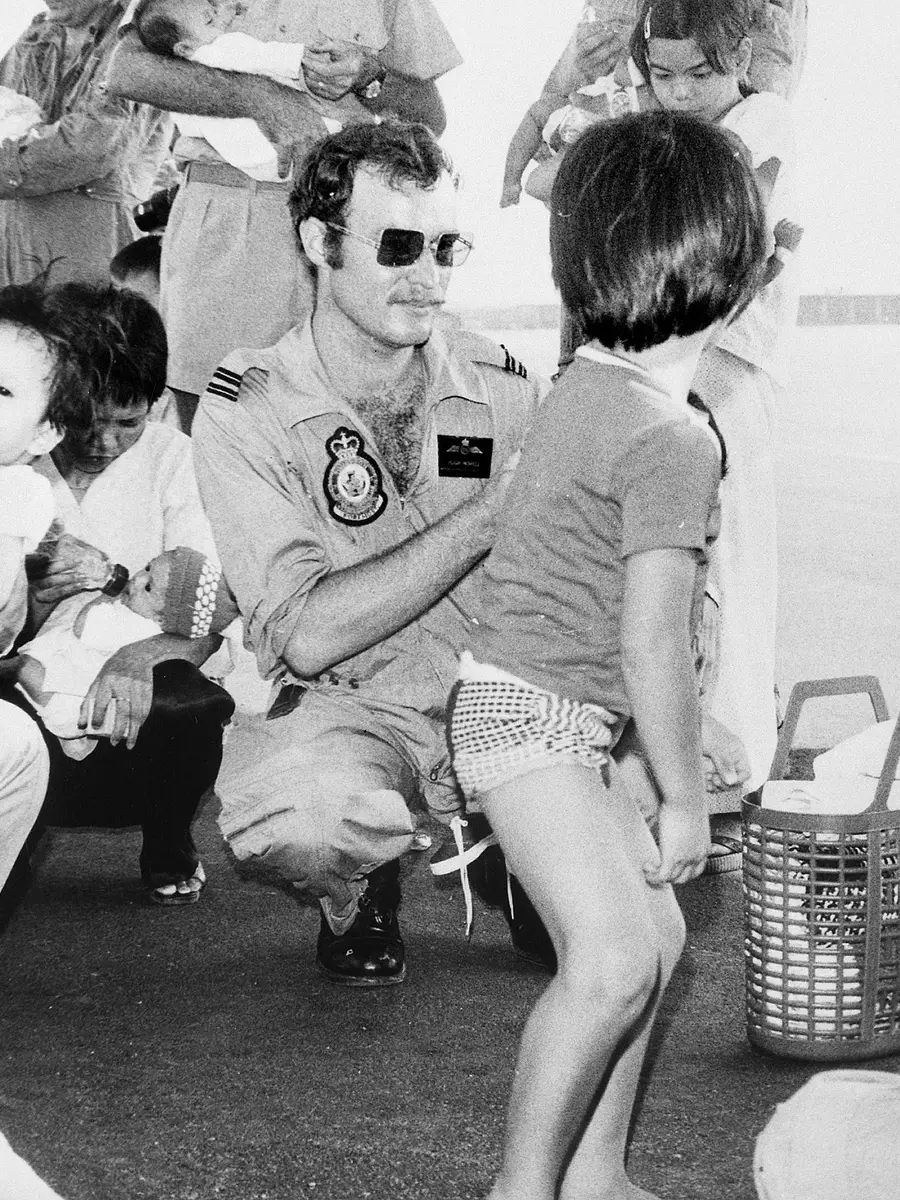In early April 1975, the Royal Australian Air Force joined a daring US-led mission — Operation Babylift.
In early April 1975, the Royal Australian Air Force joined a daring US-led mission—Operation Babylift.
In the final weeks of the Vietnam War, this humanitarian effort evacuated thousands of orphaned and displaced children from Saigon.
Former RAAF pilot Hugh Howell and Vietnamese adoptee Dominic Golding Nguyen share their story.
"Operation Babylift was the largest evacuation ever of orphans, and it took place in the last few weeks of the Vietnam War.
In April 1975, 3,000 children were evacuated from Saigon to America, to Australia, and to other countries in Europe. It came about at the request of United States President Gerald Ford.
The Vietnam War had dragged on for 20 years, and in the dying months of that conflict, Saigon was awash with refugees and it's estimated that there were about 20,000 orphans."
"Back in the time of the baby lift, I was a pilot in the Royal Australian Air Force in 37 Squadron.
We were briefed that we were going to be taking orphans, basically. We didn't know they were babies, just orphans back to Bangkok.
So it was a pretty traumatic time and it was curfew at night, so we only flew during the day.
At night time, we used to sit up the top of the hotel and we could actually watch the firefight coming down, all the bombs and this sort of stuff and the tracer and everything, as the Viet Cong were coming back down towards Saigon,. And then in the mornings we would head out to the airport.
We arrived in the cool of the morning. Some buses pulled up with the children and the nuns who were looking after them.
And we’re sitting out in the big, you know, concrete tarmac with just the aircraft just parked there and it gets very hot out there, very hot.
So, obviously there were bottles - the photograph you see is us bottle feeding these kids to try and keep them hydrated.
Because of the danger of surface-to-air missiles, so we would actually have to take off and then climb in a circular pattern up over the top of the airfield, which was a safe area, up to about 10,000 feet before we could then set off."
"The United States from Saigon was about double the length of the flight from Saigon to Australia. And those that came to Australia were the ones that were so sick and malnourished that their carers didn't think they could sustain that longer journey to the United States.
When they landed in Australia, almost all of them required a degree of medical intervention of some sort or the other. Some of them were very sick."
"Well, I was four months when I arrived to Australia and I spent another four months at Fairfield Hospital Infectious Diseases Unit.
I was found outside a burning building, some bombing that had occurred in Saigon, which is why I’ve got hearing loss. The type of damage of my hearing loss was because of that.
So all the other children that were evacuated had an adopted parent/s allocated through the state and territory governments. I think there were seven unallocated children and I was one of them, placed on the aircraft at the last minute.
I think the narratives and stories that people say about Operation Baby Lift, it's caught up in a lot of emotional projectory, if I can put it that way.
The North Vietnamese government and some aspects of the South Vietnamese government were not happy about Americans and Australians, French, taking children out of the country. But I know that the airlifting operation was much more complex than that. In fact, there was a lot of Vietnamese care workers were actually involved with that airlift."
"So Operation Baby Lift, the genesis was to bring these children from a very uncertain future under the rule of the communist government to safety, to a new life. And for many of the babies, they have had fruitful lives, integrated really well into loving families and interesting communities and had really interesting lives."
"I've been back to Vietnam four times and, and this year will be my fifth time. This t-shirt I got from one of those trips, it says Vietnam is not a war it’s a country."
"I think it is important to remember that that's not the case for all of the children. When you remove a child from a country of one race and place them in the care of a family of another race, things aren't likely to be really, really easy and the climate in Australia in the 1970s was very different to now."
"I’m a bogan Australian from Mount Gambier, and that’s just who I am. I just happen to have Vietnamese background."
"I'm so pleased that, uh, you know, we as a country were able to take these kids and hopefully given them a good life here in Australia. Something I'm proud to have been involved in, in my own very little small way."

